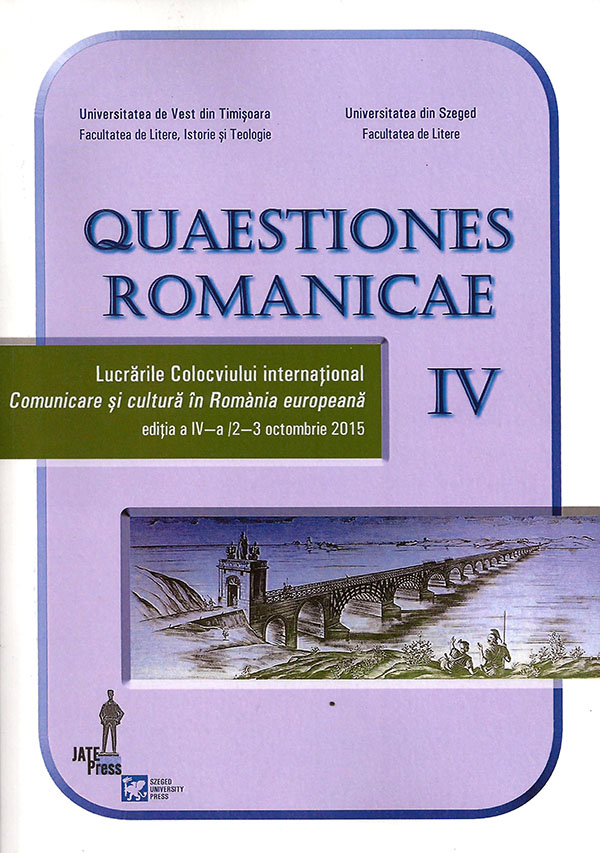Analyse du chronotope dans le roman français postmoderne. Étude de cas: Petites scènes capitales de Sylvie Germain
Abstract: In our approach, we will focus on the beginning of the latest novel written by Sylvie Germain, Petites scènes capitales, a jewel of the 2013 literary season which was also part of the selection of the Prix Goncourt, in order to analyse the construction of the spatiotemporal marks. The beginning of a book represents the time of the signature of the fictional pact, highlighting the importance of the chronotope as an element which builds reality and anchors the reader into the fictional world. We will illustrate the dichotomy between the endogenous chronotope, also called internal or character’s chronotope and the exogenous chronotope, external or narrative chronotope. The analysis of the chronotope is not devoid of value, but it opens the doors to many possible interpretations, to different perspectives on the text, also called textual openings of which we mention the semiotic opening that questions the signs and symbols hidden in the depths of the text, the narratological opening that clarifies the relationship between the author, the narrator and the characters and the sociological opening, that refers to the reception of the book. The study of the chronotope also includes different functions of which we name the narrative function that refers to the organizational role of the chronotpe within the novel, the axiological function, as the chronotope transmits the picture of an era through time and the authorial function that allows the reader to observe the degree of adherence of the narrator to his text.
Keywords: Chronotope, endogenous chronotope, exogenous chronotope, textual openings of the chronotope, functions of the chronotope.
Résumé: Dans notre démarche, nous allons nous pencher sur l’incipit du dernier roman de Sylvie Germain, Petites scènes capitales, un bijou de la rentrée littéraire de l'année 2013 qui a également fait partie de la sélection du Prix Goncourt, afin d’y analyser la construction des repères spatio-temporels. Le début d’un livre représente le moment de la signature du pacte fictionnel, valorisant l’importance du chronotope comme élément qui forge le réel et ancre le lecteur dans l’univers romanesque. Nous allons illustrer la dichotomie entre le chronotope endogène, appelé aussi intérieur ou du personnage et le chronotope exogène, extérieur ou du récit. L’analyse du chronotope n’est point dépourvue de valeur, mais elle ouvre les portes vers de nombreuses interprétations possibles, vers des perspectives différentes sur le texte, appelées aussi ouvertures textuelles dont nous mentionnons l’ouverture sémiotique qui interroge les signes et les symboles cachés dans les profondeurs du texte, l’ouverture narratologique qui clarifie le rapport entre l’auteur, le narrateur et les personnages et l’ouverture sociologique qui fait référence à la réception du livre. L’étude du chronotope comporte aussi de différentes fonctions dont nous rappelons la fonction narrative qui renvoie au rôle organisateur du chronotope à l’intérieur du roman, la fonction axiologique, puisque le chronotope esquisse le tableau d’une époque à travers le temps et la fonction auctoriale qui permet au lecteur de discerner le degré d’adhésion du narrateur à son texte
Mots-clés: Chrototope, chronotope endogène, chronotope exogène, ouvertures textuelles du chronotope, fonctions du chronotope.
